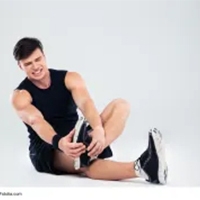
There are differences between a sprain, strain and fracture but, as you may have experienced, at times it can be hard to tell them apart.
If you’ve injured yourself, it’s very difficult to distinguish between these different conditions without certain tests. Getting the correct diagnosis is important to ensure you get the appropriate treatment so the injury properly heals and you avoid future problems.
The difference between a sprain and a strain
A strain is a stretched or torn muscle or tendon that can be caused by a recent injury or a prolonged over-stressing of the muscle. Strains usually occur in the back or hamstring muscles.

A sprain is a stretched or torn ligament, which is the tissue that connects bone at a joint. Sprains are very common in wrists and ankles, but can also occur in feet, elbows, hands, and any ligament at a joint.
Treatment for strains and sprains are similar and will start with a suggested RICE therapy:
- Rest
- Ice
- Compression
- Elevation
To decrease pain and inflammation, your doctor will usually recommend this during the first 24-48 hours following an injury. From there you will need to improve the condition of the injury and restore function by working to regain strength and flexibility.
Broken bones
A fracture, or broken bone, can occur from an injury or long-term overuse which results in a stress fracture. It’s difficult to tell the difference between a sprain and a fracture, so an x-ray is often done to be sure. The treatment for a broken bone can be wearing a cast or a splint, and surgery is sometimes needed to keep the bone in place.
Preventing injuries
To prevent future problems after an injury, or to prevent an injury from happening in the first place, there are a few measures you can take.
- If your joints or muscles already ache, it may be a good idea to wear a brace or wrap when exercising or playing sports, or avoid activities altogether.
- Warm up your joints, ligaments, muscles, and tendons, and stretch several times a week and before doing an activity.
- Be sure to use the appropriate shoes and protective equipment that is necessary.
- To keep your bones strong, consume enough calcium and vitamin D, through products like dairy and leafy vegetables.
If you are in pain and concerned that you have a strain, sprain, or fracture – come talk to Upstate New York’s Top Orthopedist group, OrthoNY. Call (518) 489-2663 to talk to an orthopedic specialist today.
